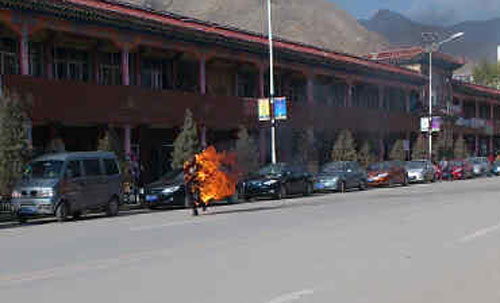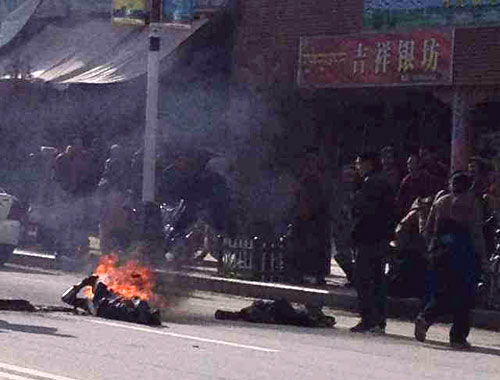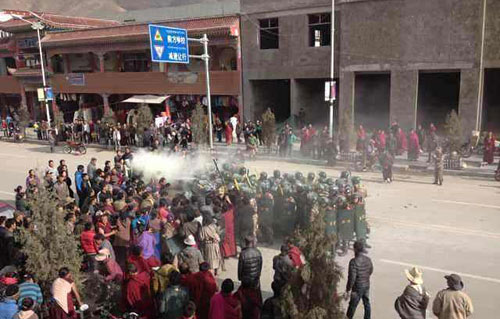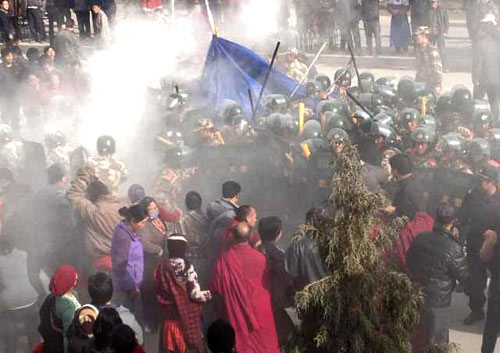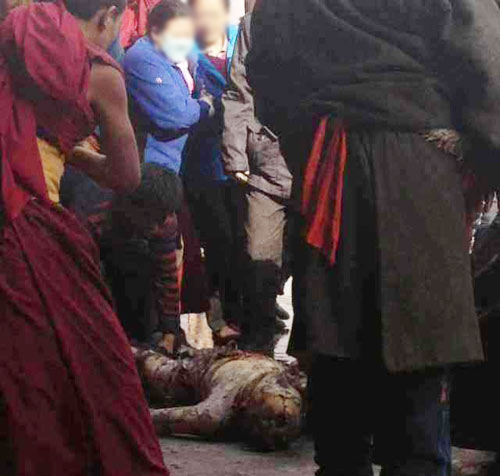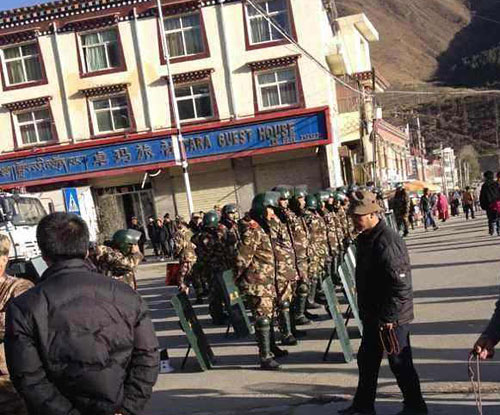A remarkable new set of images from Labrang today depict the self-immolation of Dorje Rinchen and its aftermath, showing the Tibetan farmer running down the street ablaze, and a buildup of troops in confrontation with local people trying to protect Dorje Rinchen.
The self-immolation of Dorje Rinchen has been confirmed by the Chinese state media today (October 23) and is the second self-immolation at Labrang in eastern Tibet in two days.
